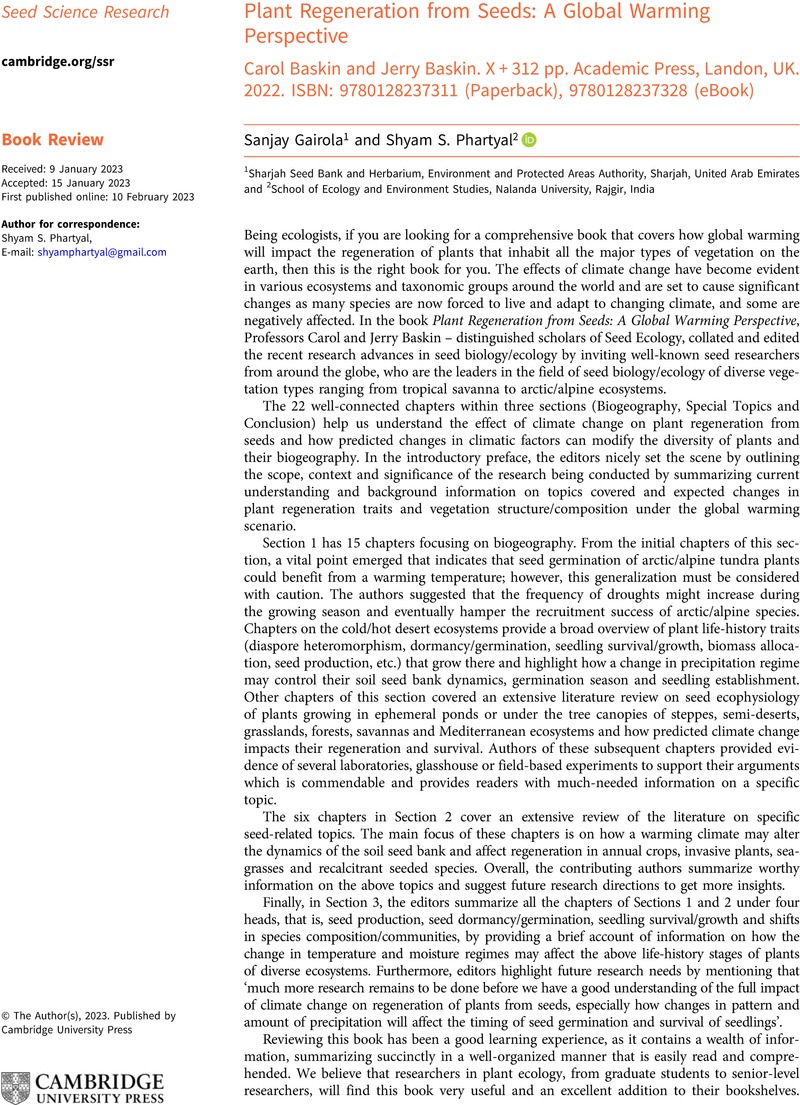No CrossRef data available.
Article contents
Plant Regeneration from Seeds: A Global Warming Perspective Carol Baskin and Jerry Baskin. X + 312 pp. Academic Press, Landon, UK. 2022. ISBN: 9780128237311 (Paperback), 9780128237328 (eBook)
Review products
Published online by Cambridge University Press: 10 February 2023
Abstract

- Type
- Book Review
- Information
- Copyright
- Copyright © The Author(s), 2023. Published by Cambridge University Press



